#Elena Cornaro Piscopia
Photo

Elena Cornaro Piscopia was born on June 5, 1646. A Venetian philosopher of noble descent who in 1678 became one of the first women to receive an academic degree from a university, and the first to receive a Doctor of Philosophy degree. She studied Latin and Greek under distinguished instructors, and became proficient in these languages, as well as French and Spanish, by the age of seven. She also mastered Hebrew and Arabic, earning the title of Oraculum Septilingue (”Seven-language Oracle”). Her later studies included mathematics, philosophy, theology, physics, astronomy, and linguistics.
#elena cornaro piscopia#philosphers#women in science#women in history#science#science history#science birthdays#on this day#on this day in science history
22 notes
·
View notes
Text
On This Day In History
June 25th, 1658: Elena Cornaro Piscopia is the first woman awarded a doctorate of philosophy.
#history#women's rights#theology#venice#italisn#italy#venetian history#Elena Cornaro Piscopia#17th century
70 notes
·
View notes
Text

Elena Lucrezia Cornaro Piscopia, Padova.
350 anni davanti al resto del mondo.
6 notes
·
View notes
Text

Un nuovo post è stato pubblicato su https://www.staipa.it/blog/giornata-internazionale-delle-donne-e-delle-ragazze-nella-scienza/?feed_id=1313&_unique_id=65c880ce9a9b6
%TITLE%
La Giornata internazionale delle donne e delle ragazze nella scienza si celebra l'11 febbraio di ogni anno per riconoscere il ruolo fondamentale delle donne nella scienza in un mondo in cui è sempre stato difficile per loro potersi esprimere.
Basti pensare che la prima donna a cui sia stato permesso di laurearsi è stata Elena Lucrezia Cornaro Piscopia nel 1678, laureata in Filosofia perché Teologia in cui voleva laurearsi non era considerato adatto a una donna. L'università di Bologna esisteva già da più di seicento anni, dal 1088. Poi goccia a goccia pian piano ne sono seguite altre
1678. Elena Lucrezia Cornaro Piscopia, Prima laureata in Filosofia1732: Laura Bassi Verati, Prima laureata in Storia naturale e medicina1751: Cristina Roccati, Prima laureata in filosofia e fisica1877: Ernestina Paper, Prima laureata in medicina1891: Fabri Cornelia, Prima laureata in Scienza Matematiche
Secondo il ‘Rapporto tematico di genere’ realizzato dal Consorzio interuniversitario AlmaLaurea (https://short.staipa.it/x6eat), ad oggi le donne costituiscono quasi il 60% dei laureati in Italia, e registrano performance migliori sia in termini di regolarità negli studi sia di voto di laurea (concludono gli studi in corso il 60,2% delle donne, rispetto al 55,7% degli uomini; il voto medio di laurea è, rispettivamente, pari a 103,9 e 102,1/110). Eppure, gli uomini sono più valorizzati sul mercato del lavoro, guadagnano il 20% in più e occupano professioni di più alto livello.
Quanti di noi immaginando una persona di scienza la immaginano donna? E quanti una persona che lavora in casa per la famiglia la immaginano uomo? Si tratta di uno dei tanti stereotipi di genere che ci portiamo avanti dai secoli in cui alle donne non era neppure permesso studiare ma poi ci scandalizziamo di popolazioni che consideriamo arretrate dove viene impedito alle donne di realizzarsi.
Per questo è importante ricordare a tutte le donne, ma soprattutto a tutte le ragazzine e le bambine che possono essere ciò che vogliono che non è impossibile diventare come Fabiola Gianotti che direttrice del CERN fino al 2025, l'astronauta Samantha Cristoforetti, Elena Cattaneo la più giovane senatrice a vita della storia della Repubblica italiana e una tra i maggiori esperti per gli studi nel campo delle cellule staminali, Lucia Votano dal 2009 al 2012 direttrice del Laboratorio nazionale del Gran Sasso, Anna Grassellino, fisica dei materiali e ricercatrice nel campo della superconduttività, che dal 2020 dirige il centro Sqms (Superconducting quantum materials and systems) al Fermilab di Chicago, Ilaria Capua virologa che dirige dal 2016 il centro di eccellenza One Health dell’Università della Florida.
Leggete e fate leggere alle ragazze libri come "Sei donne che hanno cambiato il mondo" di Gabriella Greison (https://short.staipa.it/6kjtt) o la serie di "Storie della buona notte per bambini ribelli" (https://short.staipa.it/avveu). Sono sicuro che loro, e il mondo un giorno ringrazieranno.
https://www.staipa.it/blog/sei-donne-che-hanno-cambiato-il-mondo/
#Giornatamondialedi...#donne#donnefamose#donnenellascienza#femminismo#GabriellaGreison#Giornatainternazionaledelledonneedelleragazzenellascienza#Scienza
1 note
·
View note
Text
Events 6.25
524 – The Franks are defeated by the Burgundians in the Battle of Vézeronce.
841 – In the Battle of Fontenay-en-Puisaye, forces led by Charles the Bald and Louis the German defeat the armies of Lothair I of Italy and Pepin II of Aquitaine.
1258 – War of Saint Sabas: In the Battle of Acre, the Venetians defeat a larger Genoese fleet sailing to relieve Acre.
1530 – At the Diet of Augsburg the Augsburg Confession is presented to the Holy Roman Emperor by the Lutheran princes and Electors of Germany.
1658 – Spanish forces fail to retake Jamaica at the Battle of Rio Nuevo during the Anglo-Spanish War.
1678 – Venetian Elena Cornaro Piscopia is the first woman awarded a doctorate of philosophy when she graduates from the University of Padua.
1741 – Maria Theresa is crowned Queen of Hungary.
1786 – Gavriil Pribylov discovers St. George Island of the Pribilof Islands in the Bering Sea.
1788 – Virginia becomes the tenth state to ratify the United States Constitution.
1848 – A photograph of the June Days uprising becomes the first known instance of photojournalism.
1876 – Battle of the Little Bighorn and the death of Lieutenant Colonel George Armstrong Custer.
1900 – The Taoist monk Wang Yuanlu discovers the Dunhuang manuscripts, a cache of ancient texts that are of great historical and religious significance, in the Mogao Caves of Dunhuang, China.
1906 – Pittsburgh, Pennsylvania millionaire Harry Thaw shoots and kills prominent architect Stanford White.
1910 – The United States Congress passes the Mann Act, which prohibits interstate transport of women or girls for "immoral purposes"; the ambiguous language would be used to selectively prosecute people for years to come.
1910 – Igor Stravinsky's ballet The Firebird is premiered in Paris, bringing him to prominence as a composer.
1913 – American Civil War veterans begin arriving at the Great Reunion of 1913.
1935 – Colombia–Soviet Union relations are established.
1938 – Dr. Douglas Hyde is inaugurated as the first President of Ireland.
1940 – World War II: The French armistice with Nazi Germany comes into effect.
1941 – World War II: The Continuation War between the Soviet Union and Finland, supported by Nazi Germany, began.
1943 – The Holocaust and World War II: Jews in the Częstochowa Ghetto in Poland stage an uprising against the Nazis.
1943 – The left-wing German Jewish exile Arthur Goldstein is murdered in Auschwitz.
1944 – World War II: The Battle of Tali-Ihantala, the largest battle ever fought in the Nordic countries, begins.
1944 – World War II: United States Navy and British Royal Navy ships bombard Cherbourg to support United States Army units engaged in the Battle of Cherbourg.
1944 – The final page of the comic Krazy Kat is published, exactly two months after its author George Herriman died.
1947 – The Diary of a Young Girl (better known as The Diary of Anne Frank) is published.
1948 – The United States Congress passes the Displaced Persons Act to allow World War II refugees to immigrate to the United States above quota restrictions.
1950 – The Korean War begins with the invasion of South Korea by North Korea.
1960 – Cold War: Two cryptographers working for the United States National Security Agency left for vacation to Mexico, and from there defected to the Soviet Union.
1975 – Mozambique achieves independence from Portugal.
1975 – Prime Minister Indira Gandhi declares a state of internal emergency in India.
1976 – Missouri Governor Kit Bond issues an executive order rescinding the Extermination Order, formally apologizing on behalf of the state of Missouri for the suffering it had caused to members of the Church of Jesus Christ of Latter-day Saints.
1978 – The rainbow flag representing gay pride is flown for the first time during the San Francisco Gay Freedom Day Parade.
1981 – Microsoft is restructured to become an incorporated business in its home state of Washington.
1991 – The breakup of Yugoslavia begins when Slovenia and Croatia declare their independence from Yugoslavia.
1993 – Kim Campbell is sworn in as the first female Prime Minister of Canada.
1996 – The Khobar Towers bombing in Saudi Arabia kills 19 U.S. servicemen.
1997 – An uncrewed Progress spacecraft collides with the Russian space station Mir.
1997 – The National Hockey League approved expansion franchises for Nashville (1998), Atlanta (1999), Columbus (2000), and Minneapolis-Saint Paul (2000).
1998 – In Clinton v. City of New York, the United States Supreme Court decides that the Line Item Veto Act of 1996 is unconstitutional.
2007 – PMTair Flight 241 crashes in the Dâmrei Mountains in Kampot Province, Cambodia, killing all 22 people on board.
2022 – The prime minister of Bangladesh, Sheikh Hasina inaugurates the longest bridge of Bangladesh, Padma Bridge
2022 – Russo-Ukrainian War: The Battle of Sievierodonetsk ends after weeks of heavy fighting with the Russian capture of the city, leading to the Battle of Lysychansk
2022 – Two people are killed and 21 more injured after a gunman opens fire at three sites in Oslo in a suspected Islamist anti-LGBTQ+ attack.
0 notes
Text


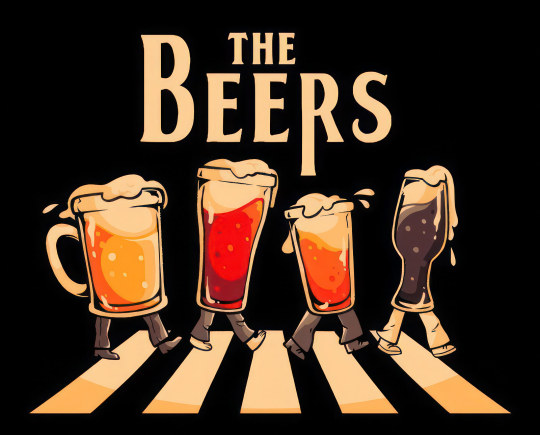
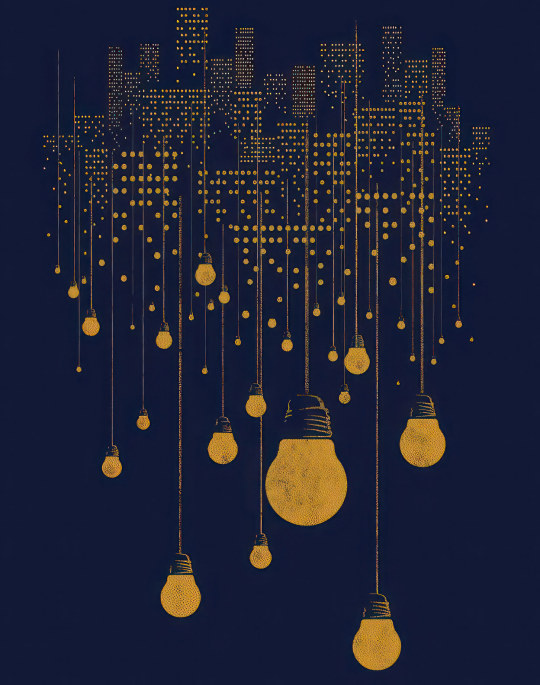
IMAGENES Y DATOS INTERESANTES DEL DIA 25 DE JUNIO DE 2023
Día de la Gente de Mar, Día Mundial del Vitiligo, Día Mundial Antitaurino, Año Internacional del Mijo y Año Internacional del Diálogo como Garantía de Paz.
Santa Eva, San Próspero y San Guillermo De Vercelli.
Tal día como hoy en el año 1678: La aristócrata veneciana Elena Cornaro Piscopia se convierte en la primera mujer que recibe un doctorado de filosofía, en la Universidad de Padua (Italia).
En 1856: Entra en vigor la 'Ley Lerdo' en México, o Ley de Desamortización de las Fincas Rústicas y Urbanas de las Corporaciones Civiles y Religiosas de México, como método para reactivar la economía y crear una clase media rural a semejanza de la estadounidense.
En 1876: Ocurre la batalla de Little Bighorn, en el territorio de Montana (Estados Unidos), en el que las tropas combinadas de las tribus lakota, cheyennes y arapajó derrotan al 7.º Regimiento de Caballería de Estados Unidos, comandado por el teniente coronel George Armstrong Custer.
En 1947: Se publica el Diario de Ana Frank. En holandés bajo el mismo nombre que ella misma pensó 'La Casa de atrás', y cinco años después de que se lo regalaran.
En 1967: La banda de rock británica, The Beatles, realiza su última aparición en televisión, en la que graban el tema 'All you need is love'.
En 1975: Mozambique se independiza de Portugal.
En 1983: Se deroga en España el uso del garrote vil, método de ejecución utilizado en este país y proveniente de la Inquisición católica. Las últimas ejecuciones por garrote vil fueron las de Salvador Puig Antich y Heinz Chez en 1974, bajo la dictadura de Franco.
En 1991: Croacia y Eslovenia declaran unilateralmente su independencia de Yugoslavia. Convirtiéndose en las primeras repúblicas en declarar su independencia.
En 1997: Ocurre un choque entre la nave rusa nave Progress (no tripulada) y la estación espacial rusa Mir.
En 1998: La empresa Microsoft saca a la venta su sistema operativo Windows 98 en Estados Unidos.
1 note
·
View note
Text
Tal día como hoy 25 de junio ...
1998: La empresa Microsoft saca a la venta su sistema operativo Windows 98 en Estados Unidos.
1997: Ocurre un choque entre la nave rusa nave Progress (no tripulada) y la estación espacial rusa Mir.
1991: Croacia y Eslovenia declaran unilateralmente su independencia de Yugoslavia. Convirtiéndose en las primeras repúblicas en declarar su independencia.
1983: Se deroga en España el uso del garrote vil, método de ejecución utilizado en este país y proveniente de la Inquisición católica. Las últimas ejecuciones por garrote vil fueron las de Salvador Puig Antich y Heinz Chez en 1974, bajo la dictadura de Franco.
1975: Mozambique se independiza de Portugal.
1967: La banda de rock británica, The Beatles, realiza su última aparición en televisión, en la que graban el tema 'All you need is love'.
1947: Se publica el Diario de Ana Frank. En holandés bajo el mismo nombre que ella misma pensó 'La Casa de atrás', y cinco años después de que se lo regalaran.
1876: Ocurre la batalla de Little Bighorn, en el territorio de Montana (Estados Unidos), en el que las tropas combinadas de las tribus lakota, cheyennes y arapajó derrotan al 7.º Regimiento de Caballería de Estados Unidos, comandado por el teniente coronel George Armstrong Custer.
1856: Entra en vigor la 'Ley Lerdo' en México, o Ley de Desamortización de las Fincas Rústicas y Urbanas de las Corporaciones Civiles y Religiosas de México, como método para reactivar la economía y crear una clase media rural a semejanza de la estadounidense.
1678: La aristócrata veneciana Elena Cornaro Piscopia se convierte en la primera mujer que recibe un doctorado de filosofía, en la Universidad de Padua (Italia).

1 note
·
View note
Text
Vicenza: "Voce di madri", venerdì 5 maggio concerto per la Festa della mamma

Vicenza: "Voce di madri", venerdì 5 maggio concerto per la Festa della mamma.
In occasione della Festa della mamma, venerdì 5 maggio alle 21 nella chiesa di San Lorenzo si terrà il concerto "Voce di madri" organizzato da Arsamanda e da Rotary club Passport Elena Lucrezia Cornaro Piscopia con il patrocinio del Comune di Vicenza.
I brani musicali saranno alternati da letture tratte da "Tutta un'altra storia. La Grande Guerra raccontata dalle donne e dai bambini" di Raffaella Calgaro. Il libro narra la storia delle madri vicentine che risposero alla guerra con l'amore verso i figli, da proteggere e da salvare, in un intreccio di voci.
I testi saranno letti dall'autore stessa, Raffaella Calgaro. I brani musicali saranno interpretati da Paola Burato, soprano, Enrico Balboni, al violino (primo violino al Teatro La Fenice di Venezia), Natalia Kukleva, al pianoforte.
Ingresso libero con offerta responsabile che sarà devoluta alla parrocchia per dare un aiuto alle persone bisognose....
#notizie #news #breakingnews #cronaca #politica #eventi #sport #moda
Read the full article
0 notes
Text
Triennale di Milano, al via una mostra interattiva

Nel giardino della TRIENNALE di Milano, Viale Alemagna 6 l’installazione interattiva MIND THE STEM GAP – A Roblox Jukebox, ideata da FONDAZIONE BRACCO e progettata da Space Caviar, di cui fa parte anche Joseph Grima, per contribuire al superamento degli stereotipi di genere nelle materie STEM (Science, Technology, Engineering and Mathematics) incoraggiando il libero accesso ai saperi di bambine e ragazze.L’installazione dialoga con i temi della 23ª Esposizione Internazionale di Triennale Milano dal titolo “Unknown Unknowns. An Introduction to Mysteries”, che sarà aperta dal 15 luglio all’11 dicembre 2022.
Triennale di Milano, accesso al mondo della scienza
L’accesso delle donne al mondo della scienza è ancora fortemente ostacolato da pregiudizi e stereotipi di genere, trasmessi – talvolta inconsapevolmente – alle bambine da famiglia e amici. Il risultato è che le donne sono ancora fortemente sottorappresentate nelle professionalità STEM. Basti pensare che nel mondo solo il 31% opera nel settore dell’intelligenza artificiale e appena il 14% in quello del cloud computing. Dopo aver lanciato il Manifesto “Mind the STEM Gap” a settembre 2021, Fondazione Bracco prosegue nell’attività di avvicinamento di bambine e ragazze alla scienza, con l’installazione omonima, che ha l’obiettivo di promuovere un’educazione delle ragazze inclusiva, valorizzando il contributo delle donne alle discipline scientifiche. I principi espressi nel Manifesto, a cui l’installazione è ispirata, toccano aspetti fondamentali dello sviluppo della persona: il linguaggio, gli stereotipi culturali, i modelli di comportamento, il gioco e lo sviluppo cognitivo, l'accesso ai saperi, la formazione continua.
Mind the STEM Gap
“Mind the STEM Gap”, allestita sino al 31 ottobre 2022 presso la Triennale Milano, propone un’esperienza di edutainment immersiva e memorabile, pensata per giocatori dai 10 anni di età in su: l’installazione, simile a un’astronave circolare, con una veste che omaggia il design italiano, permette di accedere al videogioco didattico attraverso 16 postazioni dotate di visori ottici e joystick. Le ragazze e i ragazzi, ma anche gli adulti, sono invitati a intraprendere un viaggio virtuale che prenderà le mosse dal giardino di Triennale. Utilizzando la piattaforma Roblox, ogni livello del gioco è dedicato a un sapere scientifico con sfide interattive, dalla fisica all’astronomia, in un percorso che dall’infinitesimale delle molecole porterà il viaggiatore all’immensità dello spazio, ed è introdotto da una “Virgilia”, una scienziata del passato che si è distinta in quella disciplina.
Scienza e gioco
I giocatori incontreranno infatti nel loro viaggio la fisica Marie Sklodowska–Curie, le matematiche Ada Lovelace e Maria Gaetana Agnesi, la filosofa Elena Lucrezia Cornaro Piscopia, la botanica Anna Atkins, l’astronoma Annie Jump Cannon. Un’esperienza profonda che permetterà di accedere a una galassia di mondi multidisciplinari, scoprendo la forza creativa e generativa della scienza.
Read the full article
0 notes
Text
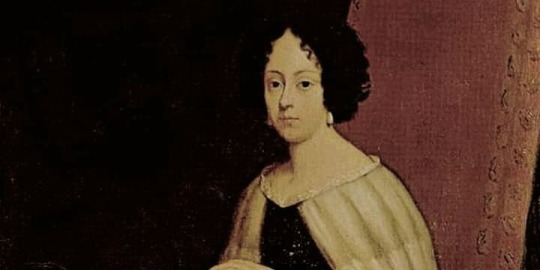
Elena Lucrezia Cornaro Piscopia (1646-1684); - The First Woman in the World to Earn a Ph.D. degree in University.
17th-century Italy. On June 25, 1678, an enormous crowd that included nobles, knights, city officials, ladies, scholarly men, the diocesan vicar general, and the entire College of Philosophers and Physicians, gathered at the University of Padua to witness Elena Cornaro Piscopia stand for her oral doctoral examination: the first time in history that a woman had been accorded this privilege! So great was the crowd that the examination had to be moved from the University's College to the cathedral in the city.
Elena Lucrezia Cornaro Piscopia was born into a noble Venetian family on June 5, 1646 in Venice, Italy.
Her father was a man of great culture and he saw the abilities of his daughter who was seen as a prodigy.
Beginning at age seven, Elena received tutoring in the classical languages of Latin and Greek, as well as grammar and music. After mastering Greek and Latin, Piscopia also learned to speak Hebrew, Spanish, French, and Arabic, in addition to her native Italian.
She was a student of the sciences as well as of languages, and she studied mathematics and astronomy in addition to philosophy and theology.
Elena came to be an expert musician too, mastering the harpsichord, the clavichord, the harp and the violin. Her skills were shown by the music that she composed in her lifetime.
But Elena's greatest love was for philosophy and theology. In 1672 Elena's father sent her to the distinguished University of Padua to continue her studies.
Elena however did not seek degrees from the University; she simply wanted to continue her learning. But her father insisted that the world recognize his daughter's incredible knowledge. So Elena applied for a Doctorate of Theology degree from the University of Padua. But her application met with resistance. Officials in the Roman Catholic Church refused to confer the title of Doctor of Theology upon a woman, and the bishop of Padua claimed himself it was ‘a big mistake to allow a woman to obtain a Theological Title' and that ‘it would make fools of ourselves to the world'. The conflict ended with the compromise to allow Elena to graduate in philosophy.
So on June 25, 1678 Elena Lucrezia Cornaro Piscopia received her deserved Doctorate of Philosophy degree from the University of Padua.
Elena spoke for an hour in classical Latin, explaining difficult passages selected at random from the works of Aristotle.
At age thirty-two she was the first woman in the world to receive a doctorate degree.
Elena Piscopia was an esteemed member of various academies throughout Europe, and she received visits from scholars of all parts of the world. Elena enjoyed debating, giving lectures in theology, and composing music.
In "Hypatia's Heritage", Margaret Alic states that she became a mathematics lecturer at the University of Padua in 1678. Her writings were published in 1688 after her death. Even today Elena Piscopia is widely quoted by other scholars and writers.
After successfully receiving her degree from the University of Padua, Elena Piscopia devoted her life to charity. She abdicated her place in Venetian society and refused several important marriages, instead taking the habit of a Benedictine oblate. During the last seven years of her life, Elena focused on learning and ministering to the poor.
Elena Lucrezia Cornaro Piscopia died at age thirty-eight on July 26, 1684. Her death is believed to have been caused by tuberculosis. Her passing caused great mourning in Padua; a truly remarkable woman had died. Elena's last wish was to be buried in the Church of Santa Giustina at Padua, Italy.
In 1895 her tomb was opened. Her body was reburied in a new casket and a tablet, extolling her virtues and relating the story of her life was placed at her head.
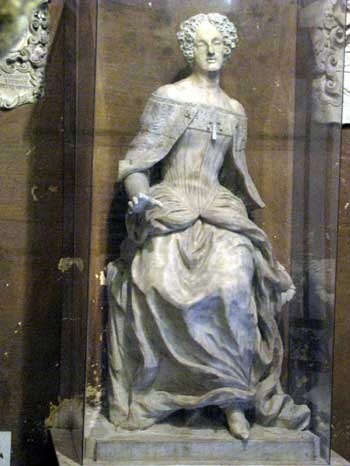

Today Elena Lucrezia Cornaro Piscopia's statue sits in the esteemed University of Padua in Italy. She is remembered in the United States too by the stained glass window at Vassar College which depicts her defending her theses at the Cathedral of Padua.
#women in history#feminism#history#women's rights#historyedit#anniversary#italy#equal rights#education#university#on this day#historical anniversary#italian women#noblewomen#catholic church#elena cornaro piscopia#padua#statue#1600s#17 century#women#elena lucrezia cornario piscopia#ruinedchildhood#winterswake#chewieblog
561 notes
·
View notes
Photo






FILÓSOFAS
Hipatia de Alejandría (368/370-415)
Elena Cornaro Piscopia (1646-1684)
Olympe de Gouges (1748-1793)
Mary Wollstonecraft (1759-1797)
Hannah Arendt (1906-1975)
Simone de Beauvoir (1908-1896)
#Hipatia#hypatia#elena cornaro piscopia#olympe de gouges#mary wollstonecraft#hannah arendt#simone de beauvoir#feminismo#feminist#women#women history#feminism
4 notes
·
View notes
Photo

Elena Lucrezia Cornaro Piscopia ( 5 June 1646 – 26 July 1684), was a Venetian philosopher of noble descent. One of the first women to receive an academic degree from a university, in 1678 she became the first woman in the world to receive a Ph.D. degree.
Lady Elena was born in the Palazzo Loredano, at Venice. She was the third child of John Baptist Cornaro-Piscopia, Procurator of St. Marks, and his mistress, later wife, Zanetta Boni. The Cornaro-Piscopia family were people of note and importance in the history of the Venetian Republic. Lady Elena’s abilities were first discovered by the Aristotelian John Baptist Fabris, who started her, at age 7, on a life of intellectual activity. After Fabris persuaded Lady Elena’s father to cultivate her intellect, Cornaro-Piscopia did all he could to advance his daughter’s education, placing her in the hands of two brilliant scholars: Professor Alexander Anderson of Padua, and Professor Luigi Gradenigo, the librarian of St. Mark’s. They were assisted by other masters, instructors in various languages such as Greek, Latin, Hebrew, Spanish, French, Arabic, and modern Greek, all of which she learned to speak as fluently as her own Italian.
The first part of her student-life was spent almost entirely acquiring languages. From there she was directed to the study of literature, rhetoric and logic, while her hours of relaxation were devoted to music and charity. The next step was to prepare her for the University examinations, which was undertaken under the tutorship of Professor Carlo Rinaldini of the University of Padua. She remained some years in the University, studying the Arts and Sciences and Theology. At last she went through the examinations for the doctorate and was elected by the examiners on the 25th of June, 1678.
The public ceremony was held in the Cathedral of Padua in the presence of the University authorities, the professors of all the faculties, the students, and most of the Venetian Senators, together with many invited guests from the Universities of Bologna, Ferrara, Perugia, Rome, and Naples. The Lady Elena spoke for an hour in classic Latin, explaining difficult passages selected at random from the works of Aristotle. She was listened to with great attention, and when she had finished, she received plaudits as Professor Rinaldini proceeded to award her with the insignia of the Doctorate, placing the wreath of laurel on her head, the ring on her finger, and over her shoulders the ermine mozetta. After the Lady Elena received the Doctorate, her name was inscribed on the Roll of Honor of many academies in Italy, France and Germany; discourses were delivered in her praise, poems and letters of congratulation were written to her by persons high in the literary world.
Her father tried to arrange betrothals for her several times, but she rebuffed each man’s advances, as she had taken a vow of chastity at the age of 11 and never married. The Lady Elena’s life was not a long one but one that was devoted to intensive study, religious observance and ministering to the poor. She died of tuberculosis at age 38, July 26, 1684. Her death was marked by memorial services in Venice, Padua, Siena and Rome. Her writings, published at Parma in 1688, include academic discourses, translations and devotional treatises. In 1685 the University of Padua caused a medal to be struck in her honour.
Image: The stained glass window in the Thompson Memorial Library at Vassar College, New York, representing the conferring of the first Doctorate to a woman, Elena Cornaro Piscopia.
178 notes
·
View notes
Photo


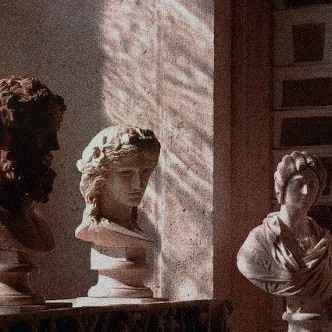

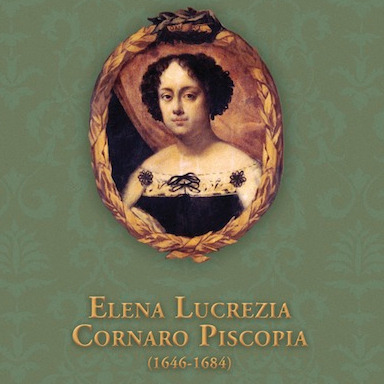

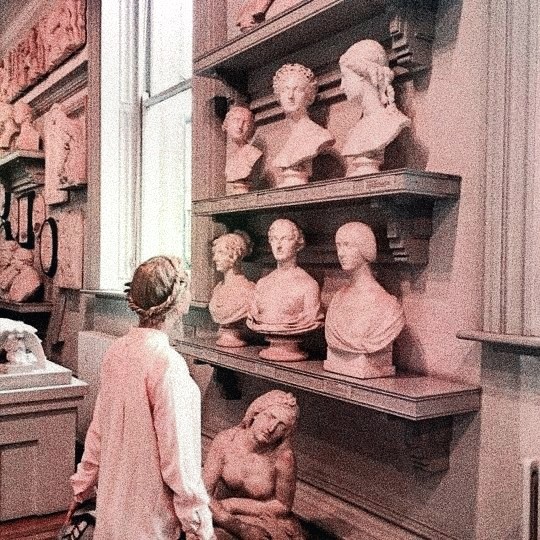

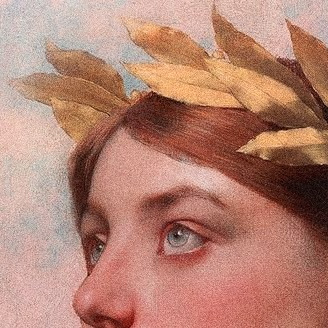
Elena Cornaro Piscopia ✏︎ 5 June 1646 - 26 July 1684, Philosopher, first woman in history to get a Ph.D at the University of Padua.
#philosophy#women#history#historic women#women in history#elena cornaro piscopia#inspirational women#aesthetic#aesthetics#venice#venetian#italy#amazing women#inspiration#moodboard#history aesthetic#pictures don't belong to me
136 notes
·
View notes
Photo

Elena Cornaro Piscopia, in 1678 she became the first woman in the world to receive a Ph.D. degree.
#elena cornaro piscopia#cornaro piscopia#piscopia#cornaro#venice#venezia#venetian#venetian people#history#women#womens history#women history#history of women#feminism#phd#first phd#womens study#gender study#gender studies#tumblr#vatican#padova#veneto#first woman#guinness world record#world record#record#uniersity life#university#padua
26 notes
·
View notes
Text

Un nuovo post è stato pubblicato su https://www.staipa.it/blog/giornata-internazionale-delle-donne-e-delle-ragazze-nella-scienza/?feed_id=735&_unique_id=63e74f3a7b6a4
%TITLE%
La Giornata internazionale delle donne e delle ragazze nella scienza si celebra l'11 febbraio di ogni anno per riconoscere il ruolo fondamentale delle donne nella scienza in un mondo in cui è sempre stato difficile per loro potersi esprimere.
Basti pensare che la prima donna a cui sia stato permesso di laurearsi è stata Elena Lucrezia Cornaro Piscopia nel 1678, laureata in Filosofia perché Teologia in cui voleva laurearsi non era considerato adatto a una donna. L'università di Bologna esisteva già da più di seicento anni, dal 1088. Poi goccia a goccia pian piano ne sono seguite altre
1678. Elena Lucrezia Cornaro Piscopia, Prima laureata in Filosofia1732: Laura Bassi Verati, Prima laureata in Storia naturale e medicina1751: Cristina Roccati, Prima laureata in filosofia e fisica1877: Ernestina Paper, Prima laureata in medicina1891: Fabri Cornelia, Prima laureata in Scienza Matematiche
Secondo il ‘Rapporto tematico di genere’ realizzato dal Consorzio interuniversitario AlmaLaurea (https://short.staipa.it/x6eat), ad oggi le donne costituiscono quasi il 60% dei laureati in Italia, e registrano performance migliori sia in termini di regolarità negli studi sia di voto di laurea (concludono gli studi in corso il 60,2% delle donne, rispetto al 55,7% degli uomini; il voto medio di laurea è, rispettivamente, pari a 103,9 e 102,1/110). Eppure, gli uomini sono più valorizzati sul mercato del lavoro, guadagnano il 20% in più e occupano professioni di più alto livello.
Quanti di noi immaginando una persona di scienza la immaginano donna? E quanti una persona che lavora in casa per la famiglia la immaginano uomo? Si tratta di uno dei tanti stereotipi di genere che ci portiamo avanti dai secoli in cui alle donne non era neppure permesso studiare ma poi ci scandalizziamo di popolazioni che consideriamo arretrate dove viene impedito alle donne di realizzarsi.
Per questo è importante ricordare a tutte le donne, ma soprattutto a tutte le ragazzine e le bambine che possono essere ciò che vogliono che non è impossibile diventare come Fabiola Gianotti che direttrice del CERN fino al 2025, l'astronauta Samantha Cristoforetti, Elena Cattaneo la più giovane senatrice a vita della storia della Repubblica italiana e una tra i maggiori esperti per gli studi nel campo delle cellule staminali, Lucia Votano dal 2009 al 2012 direttrice del Laboratorio nazionale del Gran Sasso, Anna Grassellino, fisica dei materiali e ricercatrice nel campo della superconduttività, che dal 2020 dirige il centro Sqms (Superconducting quantum materials and systems) al Fermilab di Chicago, Ilaria Capua virologa che dirige dal 2016 il centro di eccellenza One Health dell’Università della Florida.
Leggete e fate leggere alle ragazze libri come "Sei donne che hanno cambiato il mondo" di Gabriella Greison (https://short.staipa.it/6kjtt) o la serie di "Storie della buona notte per bambini ribelli" (https://short.staipa.it/avveu). Sono sicuro che loro, e il mondo un giorno ringrazieranno.
https://www.staipa.it/blog/sei-donne-che-hanno-cambiato-il-mondo/
#Giornata_mondiale_di...#donne#donne_famose#donne_nella_scienza#femminismo#Gabriella_Greison#Giornata_internazionale_delle_donne_e_delle_ragazze_nella_scienza#Scienza
0 notes
Text
Events 6.25
524 – The Franks are defeated by the Burgundians in the Battle of Vézeronce.
841 – In the Battle of Fontenay-en-Puisaye, forces led by Charles the Bald and Louis the German defeat the armies of Lothair I of Italy and Pepin II of Aquitaine.
1258 – War of Saint Sabas: In the Battle of Acre, the Venetians defeat a larger Genoese fleet sailing to relieve Acre.
1530 – At the Diet of Augsburg the Augsburg Confession is presented to the Holy Roman Emperor by the Lutheran princes and Electors of Germany.
1658 – Spanish forces fail to retake Jamaica at the Battle of Rio Nuevo during the Anglo-Spanish War.
1678 – Venetian Elena Cornaro Piscopia is the first woman awarded a doctorate of philosophy when she graduates from the University of Padua.
1741 – Maria Theresa is crowned Queen of Hungary.
1786 – Gavriil Pribylov discovers St. George Island of the Pribilof Islands in the Bering Sea.
1788 – Virginia becomes the tenth state to ratify the United States Constitution.
1848 – A photograph of the June Days uprising becomes the first known instance of photojournalism.
1876 – Battle of the Little Bighorn and the death of Lieutenant Colonel George Armstrong Custer.
1900 – The Taoist monk Wang Yuanlu discovers the Dunhuang manuscripts, a cache of ancient texts that are of great historical and religious significance, in the Mogao Caves of Dunhuang, China.
1906 – Pittsburgh, Pennsylvania millionaire Harry Thaw shoots and kills prominent architect Stanford White.
1910 – The United States Congress passes the Mann Act, which prohibits interstate transport of women or girls for “immoral purposes”; the ambiguous language would be used to selectively prosecute people for years to come.
1910 – Igor Stravinsky's ballet The Firebird is premiered in Paris, bringing him to prominence as a composer.
1913 – American Civil War veterans begin arriving at the Great Reunion of 1913.
1935 – Colombia–Soviet Union relations are established.
1938 – Dr. Douglas Hyde is inaugurated as the first President of Ireland.
1940 – World War II: The French armistice with Nazi Germany comes into effect.
1941 – World War II: The Continuation War between the Soviet Union and Finland, supported by Nazi Germany, began.
1943 – The Holocaust: Jews in the Częstochowa Ghetto in Poland stage an uprising against the Nazis.
1943 – The left-wing German Jewish exile Arthur Goldstein is murdered in Auschwitz.
1944 – World War II: The Battle of Tali-Ihantala, the largest battle ever fought in the Nordic countries, begins.
1944 – World War II: United States Navy and British Royal Navy ships bombard Cherbourg to support United States Army units engaged in the Battle of Cherbourg.
1944 – The final page of the comic Krazy Kat is published, exactly two months after its author George Herriman died.
1947 – The Diary of a Young Girl (better known as The Diary of Anne Frank) is published.
1948 – The United States Congress passes the Displaced Persons Act to allow World War II refugees to immigrate to the United States above quota restrictions.
1950 – The Korean War begins with the invasion of South Korea by North Korea.
1960 – Cold War: Two cryptographers working for the United States National Security Agency left for vacation to Mexico, and from there defected to the Soviet Union.
1975 – Mozambique achieves independence from Portugal.
1975 – Prime Minister Indira Gandhi declares a state of internal emergency in India.
1976 – Missouri Governor Kit Bond issues an executive order rescinding the Extermination Order, formally apologizing on behalf of the state of Missouri for the suffering it had caused to members of The Church of Jesus Christ of Latter-day Saints.
1978 – The rainbow flag representing gay pride is flown for the first time during the San Francisco Gay Freedom Day Parade.
1981 – Microsoft is restructured to become an incorporated business in its home state of Washington.
1983 – Indian cricket team wins the 1983 Cricket World Cup.
1991 – The breakup of Yugoslavia begins when Slovenia and Croatia declare their independence from Yugoslavia.
1993 – Kim Campbell is sworn in as the first female Prime Minister of Canada.
1996 – The Khobar Towers bombing in Saudi Arabia kills 19 U.S. servicemen.
1997 – An uncrewed Progress spacecraft collides with the Russian space station Mir.
1997 – The National Hockey League approved expansion franchises for Nashville (1998), Atlanta (1999), Columbus (2000), and Minneapolis-Saint Paul (2000).
1998 – In Clinton v. City of New York, the United States Supreme Court decides that the Line Item Veto Act of 1996 is unconstitutional.
2017 – The World Health Organization estimates that Yemen has over 200,000 cases of cholera.
0 notes